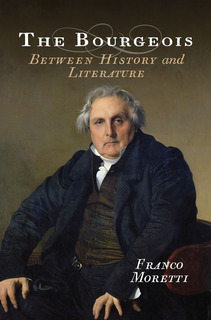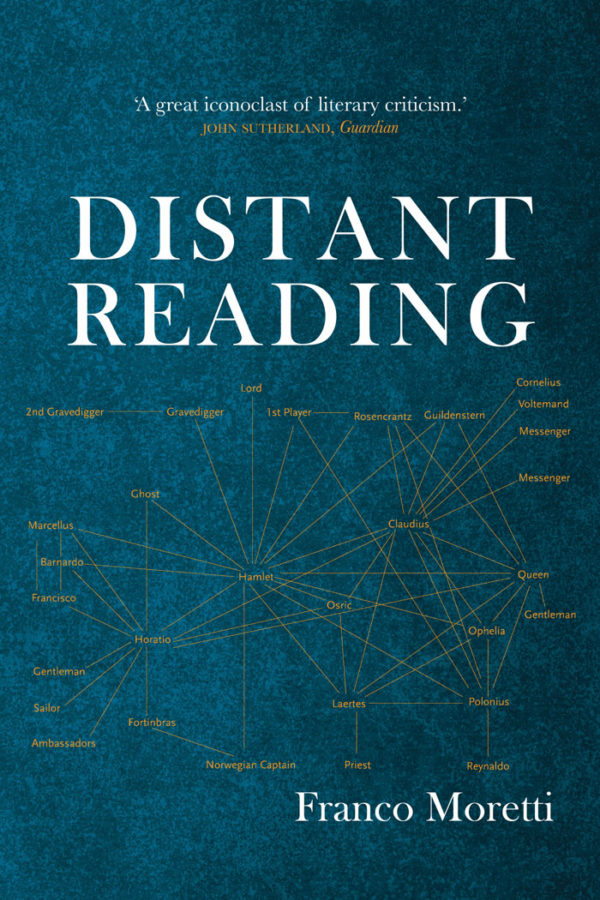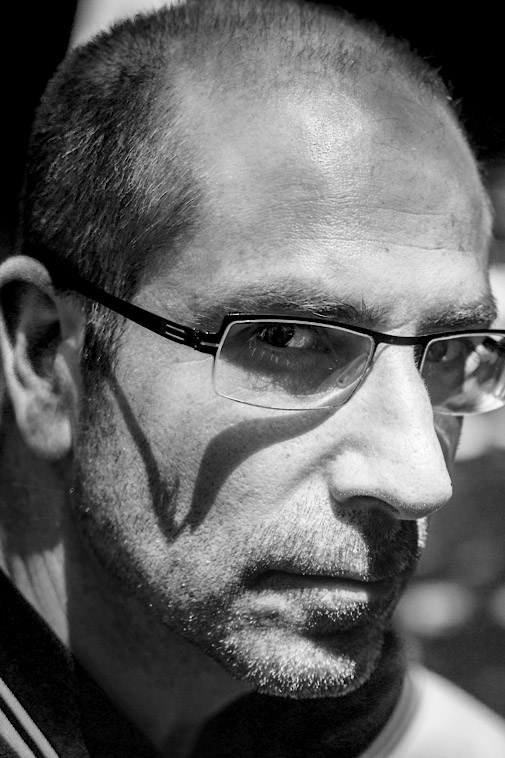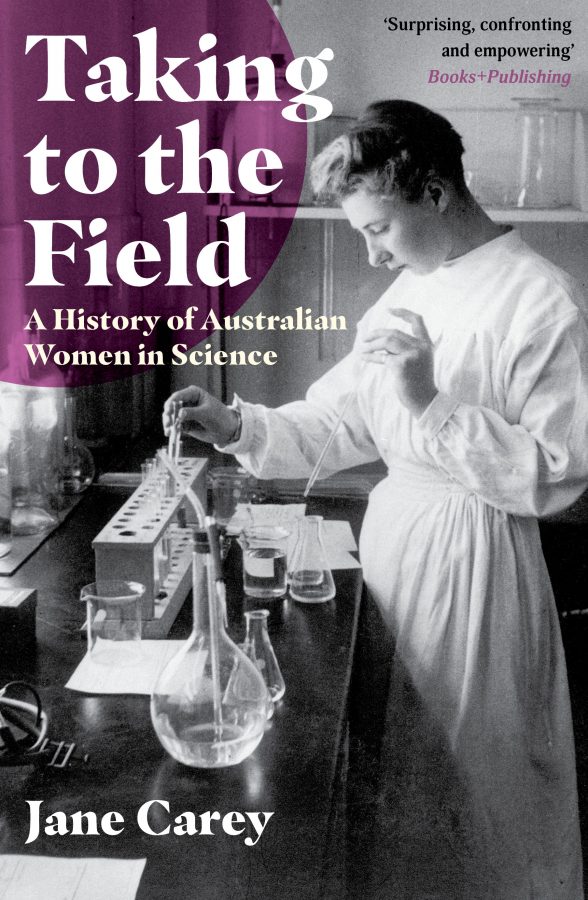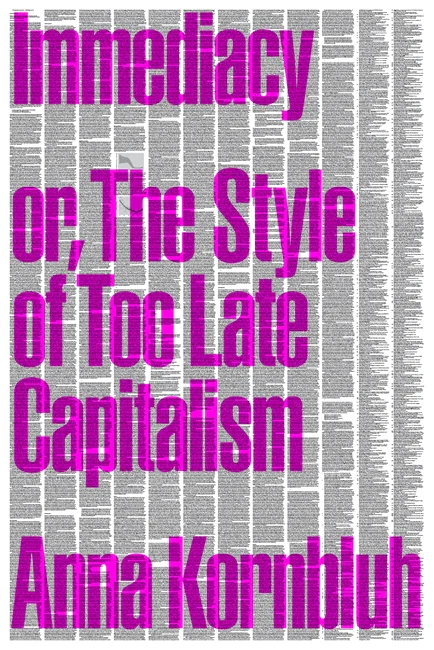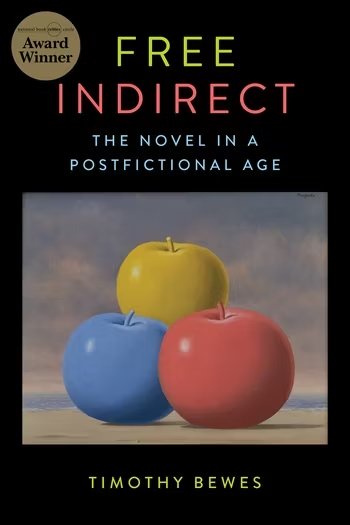Aggressively middling: The Bourgeois & Distant Reading by Franco Moretti
My first encounter with the work of Franco Moretti was as an undergraduate literature student. I picked up his suggestively titled collection of critical essays Signs Taken for Wonders (1983) at a second-hand store, mainly because I liked the cover image – a nineteenth-century faux-mediaeval fantasia of a robed wanderer sticking his head through the sphere of sun and stars to see the secret universal machinery clanking away beneath. Like that preposterous wanderer, dazzled by appearances, I immediately snuck my head into Moretti’s sparkling intellectual skies, and was apprised of the real mechanics behind things.
Moretti’s discussions of the rhetoric, import and impact of such wondrous signs as Shakespeare’s theatre, description in nineteenth-century novels, and the Romantic revivification of the figures of the vampire and the zombie, moved with unparalleled ease from microscopic details of imagery out into the grand complexities of literature’s social milieus. I remember with particular clarity the essay ‘The Great Eclipse’, in which Moretti shows that ‘Elizabethan and Jacobean tragedy was in fact one of the decisive influences in the creation of a “public” that for the first time in history assumed the right to bring a king to justice … Tragedy disentitled the absolute monarch to all ethical and rational legitimation. Having deconsecrated the king, tragedy made it possible to decapitate him.’ Wow. This was literary criticism at its contemporary best, in which one suddenly understood the role of early modern entertainment in fomenting radical political revolution.
But then Moretti moved away. A long way away. Having begun as a young Marxist aesthetician trained at the University of Rome, he was snapped up to be a professor at Columbia University, before becoming a Very Important Professor at Stanford. Note that geography is important here. One should think of this prestigious private institution’s physical location, its funding and financing routines, and its intellectual ethos in light of its proximity to the Silicon Valley digital revolution. For it was in slouching towards Stanford that Moretti, despite retaining certain key elements of his Marxist heritage – notably its nineteenth-century scientism and its commitment to a certain anti-bourgeois economism – turned away from his early virtuosic essays in interpretation to create a new practice which he has notoriously called ‘distant reading’.
At Stanford, Moretti recently became the revered progenitor and presiding genius of ‘The Literary Lab’, whose website announces its mission to discuss, design and pursue ‘literary research of a digital and quantitative nature’. Rather than a meticulous and sensitive attendance to the inexhaustible metaphorical delights of the perfect little poem or ‘well-wrought urn’, Moretti has become an avenging angel of the upper atmosphere, surveying world literature from unprecedented technocratic heights.
According to his own justification of such distant reading in his polemical treatise Graphs, Maps, Trees: Abstract Models for a Literary History (2005), such distance is ‘not an obstacle, but a specific form of knowledge: fewer elements, hence a sharper sense of their overall interconnection. Shapes, relations, structures. Forms. Models.’ The abrupt technical monosyllables that section the sausage of this sentence would surely convince even Toto that we are no longer in a Kansas of Close Reading, but in a Laboratory of Literalism. Rather than carefully cultivating a refined aesthetic sensitivity, what is now required are ‘graphs from quantitative history, maps from geography, and trees from evolutionary theory’. We need digitisation and computers, we need teams of specialists and secretaries, we need flow-charts and data-crunching! Out with the old New Criticism; in with the new Old Sciences!
Perhaps you get a sense of why I turned away from Moretti, given my deep identifications with the very legacy disciplines he was rejecting. From the evidence of these two books, I was wrong to do so – and, moreover, did so on the basis of ignorance, prejudice and laziness (although I can’t be the only one in this regard). Despite the often obnoxious and overbearing declarations of the militants of the so-called ‘Digital Humanities’, there is indeed something new and exciting going on and, of all of the workers in this emergent field, Moretti is perhaps the most energetic and interesting. You only have to scan the brilliant diagrams scattered through the essays collected in Distant Reading to get a sense of the power of his intervention, complete with their engagingly blunt descriptors: ‘Figure 5: Countries with fewest adventure films and most dramas’; ‘Figure 11: Semantic fields in very short titles: the role of adjectives’; ‘Figure 5: Hamlet: the region of death.’ When you start to look closely at Moretti’s graphs of sets of relationships in Shakespeare’s plays, you can’t deny that their base quantifications also produce a novel qualitative gain. The interior abysses of content have become externalised metadata.
Before Moretti, who would have known (or perhaps even cared?) that between 1600 and 1800 the length of novelistic titles was in inverse relationship with the size of the literary marketplace? A survey of 7000 titles that has considered their length, composition of adjectives and nouns, degrees of abstraction, and so forth, can’t be wrong, right? And now it is proven, why was this so? The interminable abstracts that once functioned as titles for the early prose scribblers melted away like the Wicked Witch of the West under the pressure of market forces. As Moretti puts it, ‘when it came to standing out in a crowded marketplace, short titles were better.’ As the literary economy expanded and differentiation accelerated, a title could no longer function as an extended orienting summary for a prospective reader who had a lot of time and not many choices; it had to become an advertisement for itself – brief, elliptical, suggestive, jostling for attention against innumerable hostile competitors. A title will now attract you; a review will inform and evaluate it for you; the genre, as such, will occupy you. As Moretti puts it elsewhere, ‘a new novel per week … is already the great capitalist oxymoron of the regular novelty: the unexpected that is produced with such efficiency and punctuality that readers become unable to do without it.’ The regular novelty, the expected surprise, the contradictory logic: welcome, friends, to the little dynamic paradoxes of modern writing.
Yet it was when I turned to The Bourgeois that I really got a sense of Moretti’s epistemological superiority over most of his humanities competitors, digital or no. It is not that the scientific team-man has simply trumped or supplanted the delicately tuned aesthetician. It is that Moretti has become both simultaneously, a lonely centaur or Janus-faced creature, at once historically minded and future oriented, sentimental and technicist, elegiac and plain speaking. This, we discover in the very first pages of the book, is the peculiar situation of the bourgeois gentilhomme himself, a self-dissembling member of a class-that-is-not-a-class, ‘an enigmatic creature, idealistic and worldly’, aggressively middling yet assertively regnant. The bourgeois seems to evade any fixity, but somehow exhibits a particular unity. He is inseparably indulgent and predatory, obsessed with hard work yet addicted to comfort and leisure, a priest of commonsense and usefulness while showing himself an aficionado of terrifying gothic intensities.
Think of the histrionic architectural lunacy of the British Houses of Parliament, one of the imperial, imperious flowers of the Gothic Revival. Despite being funded with the lucre generated by the most advanced and rapacious industrialised colonial empire on the planet, it was ‘conceived as a cross between a cathedral and a castle’. How about housing an ultra-modern piece of transport technology, such as a steam train, in a turreted, crenellated, gargantuan folly? Why not pop a gargoyle on that empty parapet? What sort of a culture engages in such bizarro retro-futuro practices, anyway? Scratch a little, and up pops a scabrous regional variant of the European bourgeoisie: the British middle-classes. The German philosopher Friedrich Nietzsche was one of the rare thinkers of the time who was not fooled by their lethal-but-lovable fogginess, and excoriated their shameful mendacity. But Moretti isn’t fooled either, though his own judgements are less intemperately delivered than his illustrious forbear’s.
As Moretti shows in a sequence of bravura close readings, supported by some sobering quantitative analyses, the bourgeoisie did something to the time of lived experience. Experience was no longer the representable time of ritualised or grand events, with gaps of unremarked existence in between – as is perhaps the case in early modern chronicles and romances – but the relentless grey regularising of everyday life. Life itself becomes nothing but interminable filler. The good bourgeois ends up at evening meal after evening meal at the domestic dinner table with the family and servants, with all its predictable variations and little irregularities; at endlessly-repeated meetings with business-partners and lawyers; pontificating at philanthropic galas with other eminent pillars of the community. Sometimes our bourgeois subject attempts to analyse and break with the uproarious monotony of quotidian life by reading the latest novels, which are themselves, as it happens, now mostly stuffed with filler drawn from the self-same quotidian. The emblematic bourgeois prayer, remarked the great German philosopher G.W.F. Hegel, is the diligent morning reading of the daily newspaper.
Yet in this regularisation, even retardation of life, in the new domination of the world by ever more intrusive administrative routines, new vistas of possibility open up in the almost imperceptible scintillations of little things. Exemplifying a mean-spirited and reduced attitude towards others, which gauges and treats them according to the incontestable gold standards of ‘usefulness’, ‘efficiency’ and ‘comfort’, the bourgeois attitude comes to be unexpectedly coupled with an almost uncanny sense of wonder, however minimal and constrained, at the startling yet boring adventure that is everyday life.
As Moretti reminds us, the word ‘adventure’ begins its own modern European adventure not as ‘a type of event, but a form of capital’ – that is, ‘adventure as a form of investment’. Such adventure, into the bargain (and one might speculate, too, as to the bourgeois origins of the phrase ‘into the bargain’) not only encompasses the perils of mercantile risk, but the acquisition of such diverse goods as persons, objects and territories by brute force. When Dutch entrepreneurs realise they can make more money selling arms to the Spanish than to their own people, any solid bourgeois would acknowledge the priority of profit over the risk of getting shelled. It is no wonder, then, that the linchpin of Moretti’s demonstrations is provided by Daniel Defoe’s world-historical novel, Robinson Crusoe (1719), famous for the grit and persistence of its eponymous protagonist. Moretti’s genius here is to show that, despite all the nominally exciting episodes of shipwreck and slaving that pepper the novel, these are no longer the true centre of the tale. On the contrary, Crusoe is the harbinger of a new ideology of diligence, assiduousness and industry. But I bet you’ll be distracted by the bunny of disaster while the needle of the bourgeois order squirts its regulating fluids into your bloodstream.
Despite what Hegel called the ‘prose of the world’ – that is, the fundamentally prosaic nature of bourgeois existence – such disenchanted and rationalised enclosures somehow become a triumph of pure style. This becomes evident with Gustave Flaubert’s Madame Bovary (1857), the very apotheosis of a kind of art-for-art’s-sake. As it does so, however, another stunning reversal occurs: the triumph of style undercuts all and any principles for action. Perfection and precision invert into nihilism. As Moretti remarks, ‘it’s one thing to aim at dehumanized impersonality in an elite avant-garde laboratory, which has its exclusive Faustian rewards; quite another to present it as a general social destiny, like this literature does.’ Every event, detail, and person becomes at once partial, partisan and utterly constrained. The secret life of things that is revealed in the exemplary innovations of bourgeois prose turns out to negate itself; the stability of bourgeois character becomes a dehumanised and stupefied automaton. Literature did not have to wait for cyberpunk to find ways of presenting humans as technologically enhanced organic machines.
So the very precision of bourgeois realism undoes the meaning it purports to reveal, if it does not liquidate it altogether. And where meaning has, to use a Mallarméan expression, fallen into desuetude, then one thing and one thing alone is able to rebind the social body amidst the nihilistic uproar. Only, it’s not a thing. Or rather, to speak like Karl Marx about the commodity, it is a very queer thing indeed. That thing, or non-thing, is of course the market. As Marx and Engels famously declare in The Communist Manifesto (1848) about the bourgeoisie, ‘it has drowned the most heavenly ecstasies of religious fervour, of chivalrous enthusiasm, of philistine sentimentalism, in the icy water of egotistical calculation. It has resolved personal worth into exchange value, and in place of the numberless indefeasible chartered freedoms, has set up that single, unconscionable freedom – Free Trade.’
Having done so, however, the bourgeoisie cannot bear its own revelation. The closed circuit of political economy thereafter starts to repeat itself like a deranged accountant: from calculation to competition to accumulation to nihilism to quotidian misery, then back to the market again, as if the very cause of the problem could be its only solution.
Hence the extraordinary phenomenon of bourgeois cultural counter-reaction, whose finest flower emerged with and as Victorian Britain. It is here that Moretti’s double-method shows itself at its most powerful and persuasive. Let’s pause a moment to examine some of the twists of his demonstration, which begins with an analysis of Samuel Smiles’ 1859 bestseller Self-Help. Reading the text, Moretti is struck by the feeling that it was ‘as if Smiles couldn’t think of a noun without immediately attaching a qualifier to it: patient purpose, resolute working, steadfast integrity.’ However, as Moretti immediately adds with a sort of disenchanted glee, ‘I started seeing crowds of adjectives in every Victorian text I read. Had I stumbled upon the stylistic secret of that age? A grammatical parser went to work on the 3500 novels of the Stanford Literary Lab, and gave its verdict: No.’
Nothing like a bit of rigorous data-mining to put the kibosh on an aesthetic afflatus, then. It turns out that the Victorians deploy adjectives neither more nor less than the next person. But do they deploy them in the same way? At this point, Moretti finds himself returning to semantic, that is, qualitative analysis. And what he finds is – and how bourgeois is this phenomenon? – at once more familiar and more strange. Whereas Robinson Crusoe had opened a trajectory for the novel that culminated in the pinnacle of aesthetic nihilism that is Madame Bovary, characterised by its extraordinary precision of perception, identification and analysis, the Victorian bourgeoisie resolutely turned their faces against just such an enterprise: ‘the point is clear: in Victorian times, a large group of adjectives that used to indicate physical traits begin to be widely applied to emotional, ethical, intellectual, or even metaphysical states.’ Ho, those sneaky Victorians!
More familiar, then: we already knew the Victorians were as much indulgent sentimentalists as they were rapacious imperialists. Yet more strange: we never before knew the Victorians precisely like this. Given his unique combination of incontrovertible quantitative analysis and assiduous attentiveness, Moretti is able to prove to us – prove, I would emphasise, not simply suggest or show – that the Victorian use of adjectives is tantamount to a remarkable cultural achievement, in which moral judgement becomes at once omnipresent and effaced, much like the fog that opens Charles Dickens’s astonishing masterpiece Bleak House (1853). ‘Fog everywhere,’ comments Dickens: fog up and down the river, fog choking the Essex marshes and Kentish heights, fog and mud and mire clogging up London right to its filthy heart.
But the British assault on precision by re-injecting moral significance into the disenchanted universe will itself be assaulted, in turn, by the great Russian novelists, who find new ways of presenting the ‘unique mix of greatness and catastrophe’ inherent in bourgeois values; or, indeed, by Henrik Ibsen, whose ‘enduring lesson for the world of today’ is that ‘the good Bürger will never have the strength to withstand the creative destroyer.’ Good times ahoy, then, in the heady return of the apocalyptic corporate poetry of late capitalism in opposition to the prosaic diurnal steadiness of the bourgeois realist adventure.
But that’s also part of what makes these books so fascinating and Moretti so extraordinary. As an outstanding representative of the best and the worst of the old and the new worlds, as bourgeois elegist and data-capitalist, as aesthetician and technician, as committed political animal and indifferent Olympian, Moretti is one of the few critics of our times able at once to confirm and extend what we already knew – and to do so with a truly global, synoptic vision.
